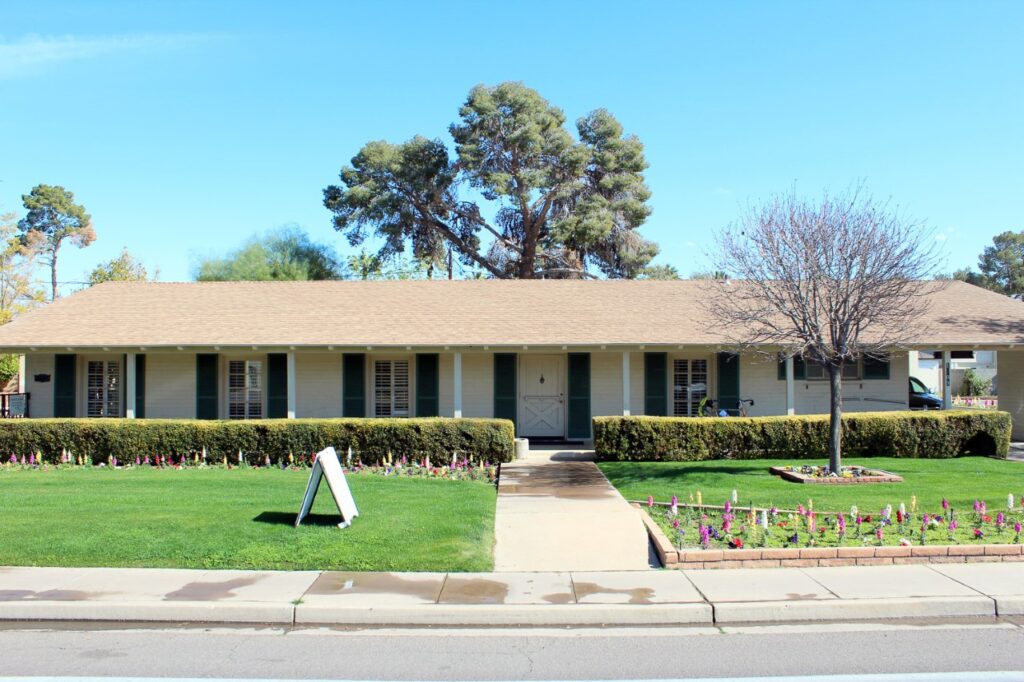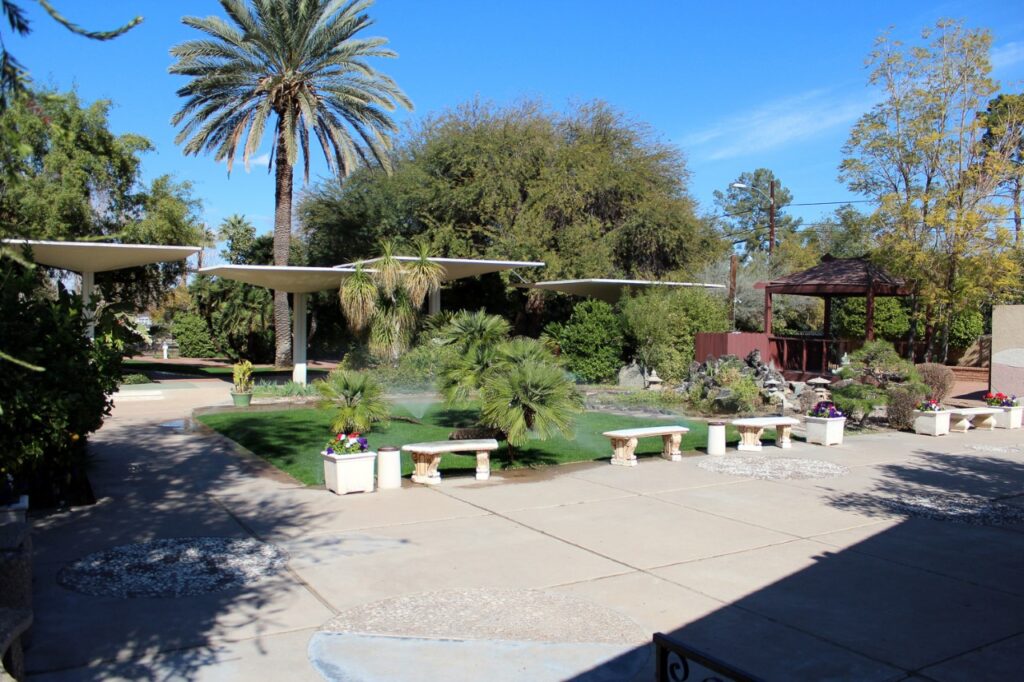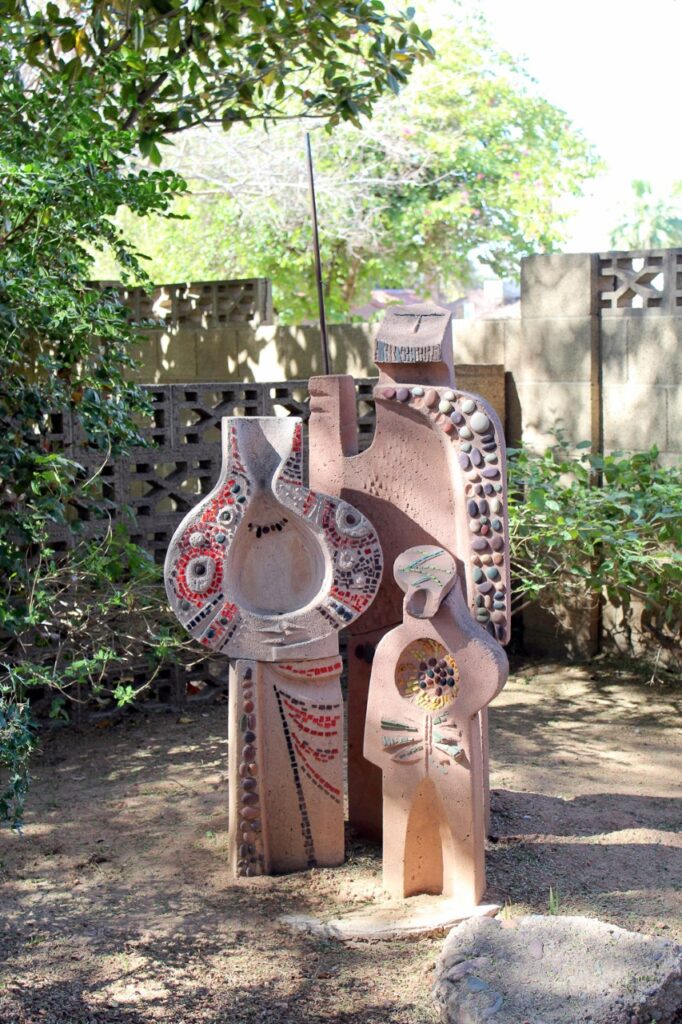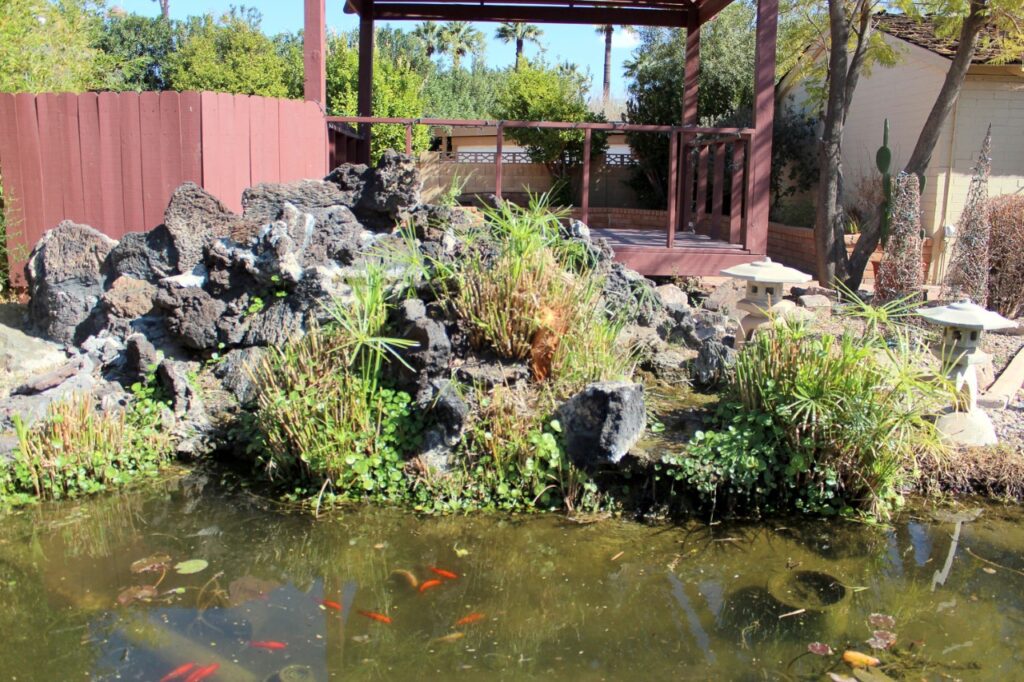Valley Garden Center
Donna Reiner, has written many articles over the years for the Arizona Republic and others about Phoenix history and memorials. She is a regular contributor to our newsletter. This month, Donna tells us about the Valley Garden Center.
Gardening in the Salt River Valley has a long and rich history. While the local Indian tribes planted vegetables, the early settlers (women) decided that flowers and trees were a way to retain the memories of their former homes. They brought seeds and had seeds and cuttings sent from back home which is how we got some of our ubiquitous weeds. With water, these gardens flourished and also provided a contrast to the natural desert vegetation.
The Valley Garden Center (VGC), which is composed of garden clubs, plant societies, and other horticulturally oriented associations, has been a part of the Salt River Valley since 1939. During World War II, VGC had its first club house on small lot at 1st Street and Culver which the organization purchased for $4500.
They installed a Victory Garden and broadcasted (on the radio) weekly horticulture programs. Ready for a larger parcel, VGC sold that lot to Barry Goldwater for $35,000 in 1946. Wisely, the group invested the funds in US Bonds.
The Center signed a 99-year lease with the city in December 1946 for a strip of land in Encanto Park on 15th Avenue, bounded by Coronado and Holly Streets. Now the work began to have a new and much larger building to serve the needs of a myriad of garden clubs.
Over the course of the years, the organization erected a club house designed by Edward Varney and Associates (dedicated in January 1949), created six thematic gardens on the property, provided free guided tours, maintained an extensive horticultural library, worked with Encanto Park on the development of a Nature Trail, and published four editions of Practical Gardening in Southern Arizona. These are quite useful even today, so look for them in your nearest used bookstore.
The Center’s Rose Test Garden was the only one approved in Arizona by the American Rose Society when it “opened” in 1948. Later moved in 1961 to its present location north of the VGC building, an invasion of nut grass in 1968 forced the removal of the rose bushes and drastic treatment of the soil. Nevertheless, the Center persevered with the construction of new rose beds which sprung forth in 1972.
Many of you have probably seen the display of color when driving on 15th Avenue between Palm Lane and Holly Street. But don’t just drive by. Stop and smell the roses, you’ll be glad you did.
Since it is January, you may need to wait until the end of next month to see new growth and April to see new blooms. It is worth the wait. Park at the Garden Center and check out the demonstration gardens with different design themes located to the north of the Center’s building. Perhaps you will discover an idea or two for your landscaping project: koi pond and wooden teahouse, sculpture, tropical garden, patio garden, and, of course, a desert garden The Valley Garden Center provides a place that showcases the history and importance of gardening not only in Phoenix, but also in the valley.





